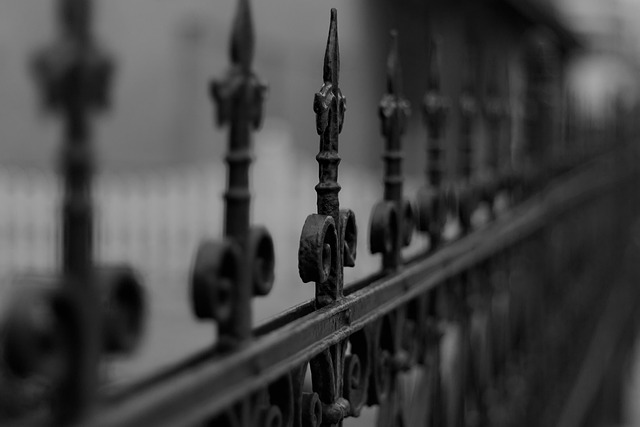New Bedford, Massachusetts homeowners looking to install a fence have a variety of options and considerations. This guide provides essential DIY tips for planning, choosing materials, and installing your new fence accurately and durably. From selecting the perfect material suited for the local climate to mastering post hole digging and attaching railing, these steps ensure a successful project that adds value and security to your property. Learn how to finish with final touches and maintain your fence for longevity.
- Planning Your Fence Installation Project
- Choosing the Right Fence Material for New Bedford Climate
- Tools and Equipment Essential for Successful DIY Installation
- Setting Post Holes: Techniques and Tips for Accuracy
- Attaching Railing and Paneling: Step-by-Step Guide
- Final Touches and Maintenance for Longevity
Planning Your Fence Installation Project
Before starting your DIY fence installation project, take time to plan and prepare. First, assess your property lines and ensure you have any necessary permits from New Bedford, Massachusetts local authorities. Consider the purpose of your fence—is it for privacy, security, or aesthetic appeal? This will impact your choice of material and design. Measure the perimeter of the area where you want the fence to be installed to get an accurate estimate of materials needed. Create a rough sketch or blueprint, marking out gates, posts, and any special features you plan to incorporate. Also, think about accessibility; ensure there’s enough space for tools and materials, and consider how you’ll transport them to the site.
Choosing the Right Fence Material for New Bedford Climate
When considering fence installation in New Bedford, Massachusetts, selecting the appropriate material is key, especially when accounting for the area’s climate. The region experiences all four seasons, from snowy winters to hot summers, and humid falls. Therefore, durable and weather-resistant materials are ideal. Wood remains a popular choice due to its aesthetic appeal; however, it requires regular maintenance to protect against rot and pest damage. An alternative is vinyl fencing, which offers low maintenance, with no painting or sealing needed, and can withstand harsh weather conditions.
Metal fences, particularly steel or aluminum, provide long-lasting durability and security but may be more expensive. They are resistant to rotting, warping, and rust, making them suitable for the New Bedford climate. Consider your budget, aesthetic preferences, and long-term maintenance goals when deciding on a fence material that best suits your needs and the local environmental conditions.
Tools and Equipment Essential for Successful DIY Installation
When tackling a DIY fence installation project in New Bedford, Massachusetts, the right tools and equipment make all the difference between a successful and frustrating experience. Start by gathering essential items like post-hole diggers or augers for digging the holes, as well as a level to ensure your fence posts are plumb (perfectly vertical). You’ll also need a measurement tape to accurately gauge distances and sizes, along with string or chalk lines for marking where your fence will be erected. Don’t forget safety gear such as gloves and eye protection—these tools can help prevent injuries during the installation process. Additionally, invest in a good quality hammer, wood chisel, and a power drill fitted with various bits to handle different tasks efficiently. Having these tools at the ready will enable you to work smarter, not harder, throughout your DIY fence installation journey.
Setting Post Holes: Techniques and Tips for Accuracy
When setting post holes for your fence, accuracy is key to ensuring a sturdy and level fence later on. Start by marking the positions of the fence posts on your property, aligning them with your desired fence line. Use string and stakes as guides to maintain straightness. Digging the holes should be done carefully; use a post-hole digger to create deep, wide pits that accommodate the length of the fence posts. The holes should be at least 3/4 of the way through the soil, with special attention paid to compacted areas. Ensure the bottom of each hole is level and free from rocks or roots that could obstruct the post’s placement.
Fill the holes about halfway with concrete to provide a solid base for your posts. Consider using rebar for added reinforcement, especially in areas prone to heavy traffic or extreme weather conditions. Allow the concrete to set completely before proceeding to install the fence posts. This step is crucial as it ensures your fence stands tall and strong against various forces over time.
Attaching Railing and Paneling: Step-by-Step Guide
To attach the railing and paneling, start by securing the posts to the concrete bases using galvanized screws or nails. Ensure the posts are level and aligned before proceeding. Next, measure and mark the height of the fence at regular intervals along the top of the posts to guide the placement of the rails. Cut the rails to size, leaving a few extra inches on each side for adjustments.
Using brackets designed for the specific fence style, attach the rails to the posts. Ensure the brackets are securely fastened with screws or nails. Once the rails are in place, measure and cut the paneling to fit between the rails. Fit the panels tightly against the rails, securing them with nails or screws to create a seamless barrier.
Final Touches and Maintenance for Longevity
After completing the fence installation, it’s crucial to add the final touches that will ensure its longevity. This includes ensuring all hardware is securely fastened and applying a protective coat of paint or sealant, especially if your fence is made of wood. Regular maintenance such as cleaning, repairing any damages promptly, and treating the fence with preservatives will significantly extend its lifespan.
In New Bedford’s climate, protecting your fence from harsh winters and intense summers is vital. Consider using high-quality sealing products designed for outdoor use to safeguard against moisture and UV damage. Schedule routine inspections to catch issues early, ensuring your fence remains in excellent condition for years to come.
